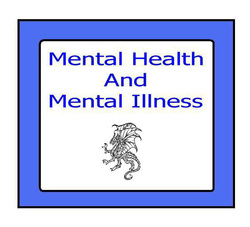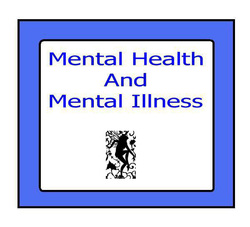
As mentioned in the previous post, anxiety is one of the most prevalent and persistent conditions in the mental health field. The National Institute of Mental Health reports the number of US citizens at between 40 and 50 million persons. There is further evidence that more women suffer from anxiety than men. It is evenly spread over ethnic and religious backgrounds and is indiscriminate in its selection of patient sexual orientation. I believe that this number is very much an underestimation, and there are many people who I consider "silent sufferers". There are also conditions where anxiety is a part of another illness and remains under reported. For example, although alcohol is a central nervous system depressant, many of those with alcohol addiction also have anxiety issues that are simply not considered reportable. So, the issue of anxiety becomes a central part of our exploration of mental illness and it will take more than one post to fully cover the significance of this problem.
Anxiety occurs along a continuum from daily worries to being completely debilitating. We are all familiar with the stress associated with starting a new job, speaking in public, or any other number of life events that cause temporary anxiety. Generally, we accommodate the short-term distress, and move on with our lives. This type of anxiety is more like a reasonable fear in that it is focused, and has potential for being very short-term. But, the following anxiety conditions with a brief description have a more significant and long-lasting impact:
Panic Disorder: Patients with this disorder experience terror and a loss of control. It is anxiety that has no apparent trigger stimuli, causes sensations of rapid heartbeat, sweating, and sometimes chest pain, a desire to seek safety, and a sense that either a heart attack or death is occurring, and has no rational explanation.
Obsessive-Compulsive Disorder (OCD): Patients with OCD have ongoing thoughts and fears that cause them to perform rituals and routines that they believe will protect them from something dreadful happening. The thoughts themselves are considered the obsession, and the rituals are the compulsions. The classic example is that of the person concerned with germs who washes their hands continually despite the risk of any real infection.
Post -Traumatic Stress Disorder (PTSD): The issue of PTSD can follow any event involving trauma, such as the death of a loved one, sexual assault, military combat, or natural disasters. PTSD patients suffer frightening memories, and develop a numbness to the world around them.
Social Anxiety Disorder: This disorder causes patients to be overly concerned and worried when in a social setting, fearing to be judged and being embarrassed or ridiculed.
Specific Phobias: This condition involves an intense fear of particular and specific objects or situations. For example, fear of snakes, flying, heights, elevators, with the fear being disproportionate to the actual object or situation.
Generalized Anxiety Disorder: This is a condition where the patient has an excessive and unrealistic worry about almost anything in life. It is a pervasive condition where anything can be a threat.
As a case manager, I have been involved with all of these anxiety conditions and can attest to the fact that these are really just the tip of the anxiety iceberg. With the next post we will begin to look at each of these illnesses and I will share composite vignettes to illustrate these examples of anxiety.
Anxiety occurs along a continuum from daily worries to being completely debilitating. We are all familiar with the stress associated with starting a new job, speaking in public, or any other number of life events that cause temporary anxiety. Generally, we accommodate the short-term distress, and move on with our lives. This type of anxiety is more like a reasonable fear in that it is focused, and has potential for being very short-term. But, the following anxiety conditions with a brief description have a more significant and long-lasting impact:
Panic Disorder: Patients with this disorder experience terror and a loss of control. It is anxiety that has no apparent trigger stimuli, causes sensations of rapid heartbeat, sweating, and sometimes chest pain, a desire to seek safety, and a sense that either a heart attack or death is occurring, and has no rational explanation.
Obsessive-Compulsive Disorder (OCD): Patients with OCD have ongoing thoughts and fears that cause them to perform rituals and routines that they believe will protect them from something dreadful happening. The thoughts themselves are considered the obsession, and the rituals are the compulsions. The classic example is that of the person concerned with germs who washes their hands continually despite the risk of any real infection.
Post -Traumatic Stress Disorder (PTSD): The issue of PTSD can follow any event involving trauma, such as the death of a loved one, sexual assault, military combat, or natural disasters. PTSD patients suffer frightening memories, and develop a numbness to the world around them.
Social Anxiety Disorder: This disorder causes patients to be overly concerned and worried when in a social setting, fearing to be judged and being embarrassed or ridiculed.
Specific Phobias: This condition involves an intense fear of particular and specific objects or situations. For example, fear of snakes, flying, heights, elevators, with the fear being disproportionate to the actual object or situation.
Generalized Anxiety Disorder: This is a condition where the patient has an excessive and unrealistic worry about almost anything in life. It is a pervasive condition where anything can be a threat.
As a case manager, I have been involved with all of these anxiety conditions and can attest to the fact that these are really just the tip of the anxiety iceberg. With the next post we will begin to look at each of these illnesses and I will share composite vignettes to illustrate these examples of anxiety.

 RSS Feed
RSS Feed
